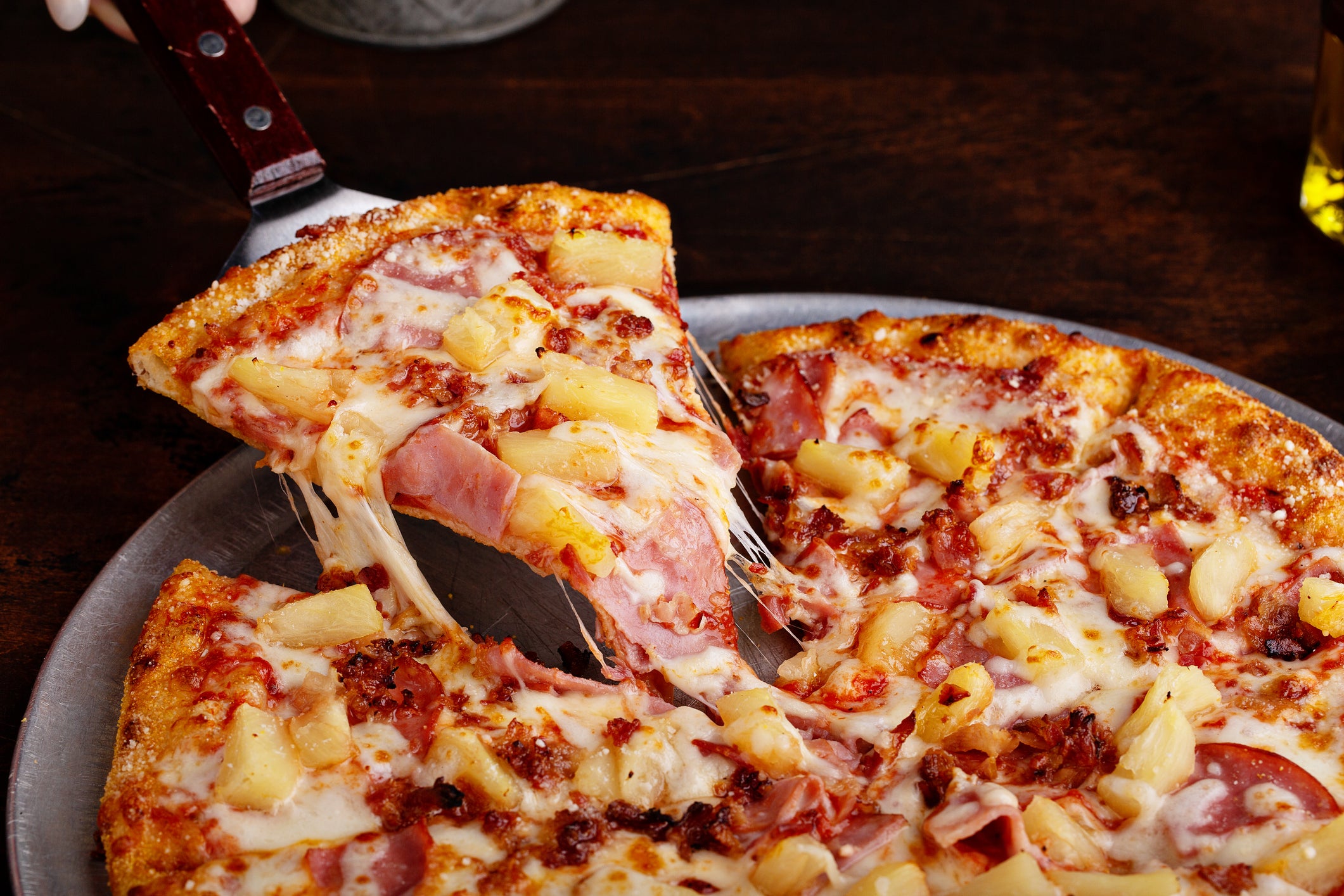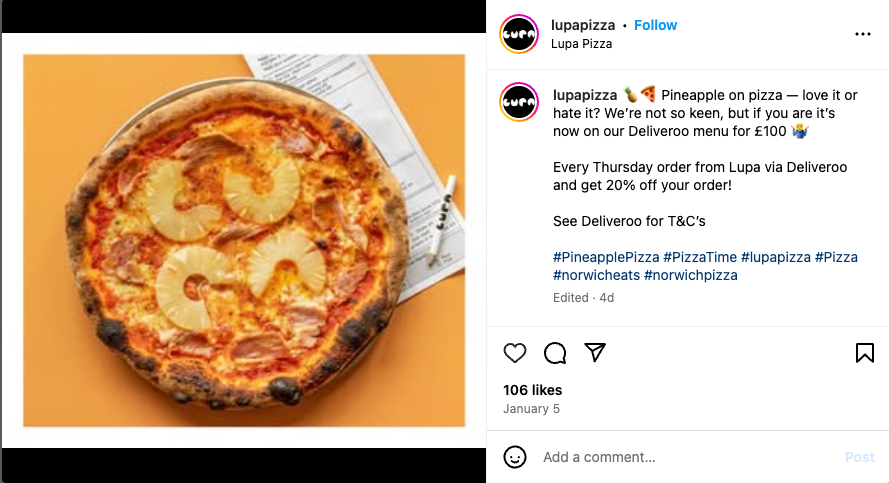Your support helps us to tell the story
From reproductive rights to climate change to Big Tech, The Independent is on the ground when the story is developing. Whether it’s investigating the financials of Elon Musk’s pro-Trump PAC or producing our latest documentary, ‘The A Word’, which shines a light on the American women fighting for reproductive rights, we know how important it is to parse out the facts from the messaging.
At such a critical moment in US history, we need reporters on the ground. Your donation allows us to keep sending journalists to speak to both sides of the story.
The Independent is trusted by Americans across the entire political spectrum. And unlike many other quality news outlets, we choose not to lock Americans out of our reporting and analysis with paywalls. We believe quality journalism should be available to everyone, paid for by those who can afford it.
Your support makes all the difference.
Pineapple on pizza is the most divisive topping to exist, responsible for causing heated arguments between pizza aficionados across the world.
Culinary heads like Stanley Tucci and Gordon Ramsay have previously denounced the existence of the Hawaiian topping – consisting of ham, cheese and pineapple – but American-style pizza chains like Dominoes and Pizza Hut proudly sell the creation to devoted fans.
One Italian restaurant is taking matters into its own hands by charging customers £100 for a standard Hawaiian to deter customers from buying the controversial concoction.
Lupa Pizza in Norwich added the option to their Deliveroo menu after receiving requests from customers. However, the staff felt so passionate about the moral wrongs of the “tropical menace” that they hiked up the price as a statement of disapproval.
On the takeaway app, the product description reads: “Yeah, for £100 you can have it. Order the champagne too! Go on you Monster!”
The restaurant posted a picture of a Neapolitan-style pizza topped with four slices of canned pineapple to its Instagram, with the caption: “Pineapple on pizza – love it or hate it? We’re not so keen, but if you are, it’s now on our Deliveroo menu for £100.”
The restaurant has made only one Hawaiian pizza before, which was exclusively for the Deliveroo picture (and the pineapple was removed before the pizza was consumed).
Francis Woolf, the co-owner of the pizzeria, told The Times: “I absolutely loathe pineapple on a pizza.”
His head chef Quin Jianoran expressed that pineapple should never be on pizza in the first place.
“I love a piña colada, but pineapple on pizza? Never. I’d rather put a bloody strawberry on one than that tropical menace.”
The restaurant, which opened in June, sells Margherita pizzas from £8, with the Pepperoni pizza costing £12 and a meatball number priced at £14.
The controversial debate surrounding pineapple pizza has haunted pizza aficionados since it was invented in the Sixties. As pizza has become an international dish, it’s not just pizza chefs how have an opinion on it.

The topping has previously been decried by Italian food expert Stanley Tucci, who called the concoction “repellent”, while British chef Gordon Ramsay said firmly: “Pineapple does not belong on pizza”.
However, there are many devotees: TV personality Dwayne “The Rock” Johnson has been among the celebrities to admit that pineapple on pizza is his favourite.
The Hawaiian pizza was not an Italian invention, nor the island of Hawaii either, since early references to pineapple on pizza date back to the mid-1950s, with the term “Hawaiian” being used to describe a pizza topped with the fruit and other combinations of ingredients.

However, the popularity of the pizza topping is often attributed to Ontario, Canada, where Greek immigrant Sam Panopoulos made the pizza in his restaurant in 1962.
Inspired by a recent visit to Naples, Panopoulos designed some pizzas for the menu – and also introduced Americanised versions of Chinese meals such as sweet and sour chicken, which included pineapple.
Stories suggest that Panopoulos added canned pineapple and ham to one pizza not knowing whether it would be popular among customers, but the mixture of savoury and sweet proved a winner.





